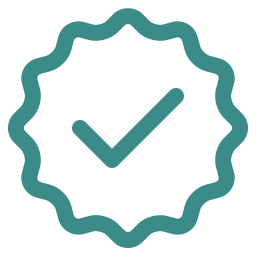Reclaim Your Body's Potential: Restoring Movement and Function through the Transformative Power of Pilates
At some point in our lives, we may experience a decline in movement and function due to injury, aging, or other factors.
However, there is hope for restoring these abilities through the practice of Pilates.
As certified Pilates instructors, we have witnessed firsthand how this exercise method can help individuals improve their core strength, flexibility, and range of motion, alleviate pain and discomfort, and enhance body awareness and control.
Pilates was developed by Joseph Pilates in the early 20th century as a way to rehabilitate injured soldiers during World War I.
The exercises he created to focus on strengthening the body's core muscles while promoting spinal alignment and proper breathing techniques.
Through regular practice of these exercises, individuals can not only restore lost movement and function but also prevent future injuries and maintain overall physical health.
In this article, we will explore how Pilates can benefit individuals looking to improve their movement and function while providing tips on incorporating it into their fitness routine with the help of a qualified instructor.
Understanding the Benefits of Pilates for Movement and Function
Pilates is a great way to improve your movement and function, so it's important to understand its benefits; especially if you’re planning to buy a Pilates Reformer for sale.
Pilates mobility exercises are designed to increase flexibility and range of motion in the joints.
This can help reduce pain and stiffness, making everyday movements easier and more comfortable.
Movement Pilates also focuses on mindful movement, which means paying attention to how your body moves and feels during each exercise.
This helps you develop better body awareness, which can translate into improved posture and balance.
By practicing mindful Pilates movement on Pilates equipment for home regularly, you may find that you move with greater ease and grace both on and off the mat.
In addition to improving mobility and body awareness, Pilates can also help strengthen your core muscles.
A strong core is essential for good posture, balance, and stability in all activities.
In the next section, we'll explore some specific Pilates exercises that target the core muscles for optimal strength and function.
Strengthening Your Core with Pilates Exercises
Like a tree with strong roots, your core is the foundation of your body's strength and stability.
Strengthen it with these exercises that are specifically designed for Pilates movement.
Pilates is an excellent way to increase your overall body strength and flexibility while also improving your coordination and balance.
Here are some core strengthening exercises that you can incorporate into your daily routine:
- The Hundred
This exercise targets all of the muscles in your midsection, including your rectus abdominis, transverse abdominis, and obliques.
Lie on your back with your knees bent and feet flat on the ground. Lift both of your legs up so that they are at a 90-degree angle to the floor.
Raise both arms up off the mat and begin pumping them up and down while inhaling for five counts and exhaling for five counts.
To make it more challenging, you should use a Stamina AeroPilates Pro XP556.
- Single Leg Stretch
This exercise works not only your abs but also helps to improve hip mobility especially when practiced on an AeroPilates Pro XP557.
Begin by lying on your back with both knees bent and feet flat on the ground.
Bring one knee up towards your chest while extending the other leg straight out along the floor.
Hold onto the raised knee with both hands as you lift yourself up slightly from the mat.
- Plank
A plank is an excellent way to strengthen not only your core but also upper body muscles like shoulders, triceps, biceps, etc., which play a key role in movement in Pilates.
Begin by getting into a push-up position but lower yourself onto elbows instead of hands.
By incorporating these exercises into your daily routine, you'll be able to strengthen not just one area of muscle but multiple areas throughout each workout session.
As a result, you'll find it easier to move around freely without any pain or discomfort caused by weak muscles or lack of flexibility.
In our next section about improving flexibility and range of motion through Pilates movements, we'll discuss how this can be achieved through various stretches targeting specific muscle groups.
Improving Flexibility and Range of Motion
Improving flexibility and range of motion can be achieved by incorporating specific stretches into your daily routine. P
ilates mobility exercises are designed to improve your body's ability to move freely, with fluidity and without pain or discomfort.
These exercises focus on lengthening and stretching muscles, increasing joint mobility, and improving overall flexibility.
Does Pilates improve flexibility? Absolutely!
The controlled movements in Pilates help to loosen tight muscles, increase blood flow, and promote a greater range of motion.
By regularly practicing Pilates on a Merrithew V2 Max Plus Reformer Bundle, you'll notice that you're able to reach higher, bend further, and move more easily than before.
Whether you're an athlete looking to improve performance or simply looking for ways to move more comfortably through daily activities, Pilates can be incredibly beneficial.
Movement Pilates on a Merrithew Pilates is about so much more than just building strength.
It's about creating balance in the body through improved flexibility as well.
Incorporating regular stretching exercises into your routine will not only improve your range of motion but also help alleviate pain and discomfort associated with tightness or stiffness in the body.
In the next section, we'll explore some techniques for using Pilates to alleviate pain and discomfort further while enhancing movement quality.
Alleviating Pain and Discomfort with Pilates Techniques
With the precision of a surgeon, incorporating specific techniques into your routine can help alleviate pain and discomfort while increasing flexibility and range of motion.
Pilates mobility is a key component in restoring movement and function to the body.
By using controlled movements and breathing techniques, Pilates helps to target areas of tension and discomfort within the body.
Alleviating pain and discomfort with Pilates techniques involves more than just stretching or strengthening muscles.
It requires a deep understanding of how movement affects the body as a whole.
Pilates focuses on improving posture, alignment, and core strength to help support the body during daily activities.
This can lead to reduced pain and discomfort in areas such as the back, neck, shoulders, hips, and knees.
Incorporating Pilates into your routine can also improve overall well-being by reducing stress levels.
Practicing Pilates on Private Pilates equipment encourages mindfulness through breath work and precise movements, which allow you to focus on the present moment rather than worrying about past or future events.
Additionally, by alleviating pain and discomfort through targeted exercises, you may experience an increase in energy levels, which can boost mood and motivation.
Enhancing body awareness and control is another benefit of practicing Pilates regularly.
By becoming more attuned to your body's movements, you may be able to recognize when certain postures or motions are causing pain or discomfort before it becomes chronic.
This increased self-awareness can lead to better injury prevention strategies both inside and outside of the studio setting.
Enhancing Body Awareness and Control
Developing a keen sense of bodily awareness and control can greatly benefit your overall physical well-being, as you become more in tune with your body's movements and limitations.
This is where Pilates comes in.
Pilates mobility exercises focus on creating fluid movement patterns by strengthening your core and improving flexibility.
With regular practice, you'll be able to move with more ease and less discomfort.
Pilates movement emphasizes precision, alignment, and breath control.
By incorporating these principles into your workouts, you'll notice improved balance and coordination.
Good movement Pilates techniques also involve mindful breathing which can help reduce stress levels while increasing oxygen flow throughout the body.
Incorporating Pilates into your fitness routine can not only enhance your body awareness but also serve as a great complement to other forms of exercise such as weight training or cardio.
It's important to note that when starting out with Pilates, it's best to work with a qualified instructor who can guide you through proper form and technique for optimal results.
So why not give it a try?
Your body will thank you for it!
Incorporating Pilates into Your Fitness Routine
By adding Pilates to your workout regimen, you'll be able to unlock a new level of physical mastery and control.
Incorporating Pilates into your fitness routine can help improve mobility by increasing flexibility and balance.
With regular practice, you'll be able to move with ease and grace.
Mobility Pilates focuses on the movement of the entire body rather than isolating specific muscles like traditional strength training exercises.
This type of training helps increase endurance while also improving posture and reducing stress on joints.
Whether you're an athlete looking for an edge or someone who wants to feel better in their daily life, incorporating Pilates into your fitness routine is a great way to achieve these goals.
Pilates movement is all about precision and control.
By focusing on proper alignment and technique, you'll be able to perform movements with greater efficiency, leading to stronger muscles and reduced risk of injury.
As you progress in your practice, you'll start seeing results not only in terms of physical ability but also in mental clarity and overall well-being.
Working with a Pilates instructor for maximum results will provide additional guidance in perfecting your form and customizing workouts that cater specifically to your needs.
Working with a Pilates Instructor for Maximum Results
If you want to get the most out of your Pilates practice, working with a skilled instructor is crucial - they can guide you through proper form and create personalized routines that help you achieve your fitness goals.
Pilates mobility and movement can be challenging to master on your own, but an experienced instructor can help you improve your technique and prevent injury.
Here are three ways working with a Pilates instructor can maximize your results:
- Personalized Routines
A good Pilates instructor will take the time to understand your fitness goals, physical limitations, and preferences.
They'll then design a customized routine that targets specific areas of improvement and challenges you just enough to make progress without overwhelming you.
- Proper Form
One of the biggest benefits of working with an expert is learning how to execute each movement in perfect form.
Incorrect posture or alignment during exercises can lead to discomfort or even injury over time.
An experienced Pilates teacher will provide hands-on guidance and verbal cues to ensure that each exercise is executed correctly.
- Progress Tracking
Regular sessions with an instructor allow for consistent feedback on your progress towards fitness goals.
This feedback not only helps track performance improvements but also serves as motivation for continued practice.
If you're looking for maximum results from your Pilates practice, consider working with a qualified teacher who specializes in the movement of Pilates.
They'll tailor exercises specifically for you, ensure correct posture and alignment during each exercise execution, and offer constructive feedback to measure progress over time.
Frequently Asked Questions
Can Pilates be practiced by people with chronic conditions or injuries?
Can Pilates be practiced by people with chronic conditions or injuries? Absolutely!
In fact, it can often be a great way to restore movement and function.
As certified Pilates instructors, we've seen firsthand the benefits that this practice can provide for those dealing with chronic pain, injuries, and other health issues.
By focusing on targeted exercises that strengthen and stretch specific muscle groups, Pilates can help alleviate pain, improve flexibility and range of motion, and enhance overall physical function.
Of course, it's important to work with a qualified instructor who can tailor the practice to your specific needs and limitations.
But if you're willing to put in the time and effort, Pilates can be an incredibly effective tool for improving your health and well-being.
What type of equipment is necessary to practice Pilates?
To practice Pilates, there are a few essential pieces of equipment that can be used. These include a mat, resistance bands, and light weights.
A mat is especially crucial as it provides cushioning and support for the body during exercises.
Resistance bands and light weights can help to increase the intensity of exercises and provide added resistance for strength training.
While there are other optional pieces of equipment, such as reformers and stability balls, they are not necessary for beginners starting with Pilates at home.
It's important to consult with a certified instructor or physical therapist before beginning any exercise regimen to ensure proper form and avoid injury.
Is Pilates suitable for pregnant women?
Pilates can be a safe and effective exercise for pregnant women, but it's important to consult with a healthcare provider before starting any new fitness routine.
Modifications may need to be made to certain exercises, such as avoiding lying on the back after the first trimester and focusing on pelvic floor strengthening and stability.
Pilates can help improve posture, balance, and core strength during pregnancy which can lead to easier labor and delivery.
It's also important to listen to your body and adjust the intensity of the exercises as needed.
With proper guidance, Pilates can be a great way for pregnant women to maintain their physical health and prepare for childbirth.
How often should one practice Pilates to see results?
To see results from practicing Pilates, we recommend incorporating it into your weekly routine at least 2-3 times per week.
Consistency is key when it comes to Pilates, as it can take time for your body to adjust and for you to develop the proper technique.
However, it's important to listen to your body and not overdo it; allowing for rest days in between sessions can be beneficial for both recovery and progress.
With regular practice, you should start noticing improvements in your overall movement, strength, flexibility, and posture within a few weeks or months.
It's also important to work with a qualified instructor who can tailor the exercises to your specific needs and goals.
Can Pilates be used as a form of physical therapy?
Pilates can definitely be used as a form of physical therapy.
It's a low-impact exercise that focuses on core strength, flexibility, and balance.
Pilates exercises are designed to restore movement and function by targeting specific muscles and joints in the body.
As someone who's personally undergone physical therapy using Pilates, I can attest to its effectiveness in helping me improve my range of motion and alleviate pain.
One figure of speech that comes to mind when describing the benefits of Pilates is "It's like oil for your joints."
Just as oil lubricates a machine's parts for smoother movement, Pilates helps loosen up stiff joints for better mobility.
Overall, incorporating Pilates into your physical therapy regimen can lead to significant improvements in both movement and function.
Conclusion
In conclusion, Pilates is an effective and proven method to restore movement and function in the body.
The benefits of this exercise are numerous, from strengthening your core muscles to improving flexibility and range of motion.
With regular practice, you can alleviate pain and discomfort while enhancing your body's awareness and control.
By incorporating Pilates into your fitness routine, you'll experience profound changes in your physical and mental well-being.
You'll feel stronger, more flexible, and more confident in your body's abilities.
Working with a professional Pilates instructor is recommended to ensure maximum results.
So if you want to restore movement and function through Pilates, don't hesitate any longer!
Start practicing today and see for yourself the transformative power of this exercise method.




